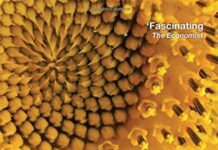
Ebook Info
- Published: 1999
- Number of pages: 312 pages
- Format: PDF
- File Size: 9.55 MB
- Authors: Philip Ball
Description
For centuries, scientists have struggled to understand the origins of the patterns and forms found in nature-from the leopards spots to the graceful spirals of a mollusc shell to the complex designs on a butterflys wing. Now, in this lucid and elegantly written book, Philip Ball applies state-of-the-art scientific understanding from the fields of biology, chemistry, geology, physics, and mathematics to these ancient mysteries, revealing how nature’s seemingly complex patterns originate in simple physical laws. Ball traces the history of scientific thought about natural patterns, showing how common presumptions-for example, that complex form must be guided by some intelligence or that form always follows function-are erroneous and continue to mislead scientists today. He investigates specific patterns in depth, revealing that these designs are self-organized and that simple, local interactions between component parts produce motifs like spots, stripes, branches, and honeycombs. In the process, he examines the mysterious phenomenon of symmetry and why it appears-and breaks-in similar ways in different systems. Finally, he attempts to answer this profound question: why are some patterns universal? Illustrations throughout the text, many in full color, beautifully illuminate Ball’s ideas. A fascination with nature,s patterns is as old as civilization. With this spellbinding book, Ball dispels age-old conundrums while increasing the readers wonder and appreciation for the beauty of the natural world. The Self-Made Tapestry will enlighten anyone who has ever marveled at the shape of a seashell or the brilliance of a spider’s web.
User’s Reviews
Reviews from Amazon users which were colected at the time this book was published on the website:
⭐I’ve long been interested in the curious, often mathematical, patterns in the nonhuman world. I especially got interested in what David Wade, in his book _Li_, calls “Li” patterns. Wade recommends this book. I like it very much and am reading it slowly to absorb all its provocative lessons. The only reason I’m giving it four stars instead of five is that while it is well-written, it’s not for everyone: it’s at the level of a college science textbook. If you want something simpler to understand with LOTS of fabulous illustrations, I highly recommend David Wade’s _Li_.
⭐I originally read this around the end of high school. Had a large influence on me and impacted my decision to become a neuroscientist. Very readable and worthwhile whether a young kid or professional thinker. (probably generally accessible from middle school onward without help)I just rebought the book here after giving away an old copy to someone.The book is older now (2000 printing I believe), but still stands as a superb intro to self-organization. The sort of book you can just open anywhere and start reading. Just peruse and enjoy. Or read cover to cover. I personally don’t know of a better intro to the subject and frequently recommend it to people or their children.
⭐Great descriptions, examples, references and photos. Easy to read but packed with material.
⭐This book is what all ‘popular’ science books should be: readable, interesting and not too dense, without sacrificing accuracy or or wandering of into unsubstantiated flights of fancy. Highly recommended!
⭐One of my favorite books of all time. Detailed and head bending exploration of how patterns are formed in nature.
⭐Extremely well-written, easy to understand to scientists overview of patternas in nature. An elegant and enjoyable approach to complexity in nature and how it arises.
⭐Excellent and inspiring book, a must have for people interested in pattern formation in nature. Good references
⭐The Self-Made Tapestry is a wonderful read both for the expert and simply curious. Explains so much about the construction of our world it should be taught in high school!
⭐How do complex geometries arise in nature, where disorder necessarily increases? Is there more to the shape of living forms than genetic information alone would suggest? Ball tackles these questions and many more, in a (largely successful) investigation into how biological patterns are generated with no conscious forethought.Ball’s background in chemistry and physics is much in evidence, but his use of many photos is effective in illustrating his examples. Perhaps controversially, I think this book would be most enjoyed by science graduates; despite having science A-levels, I admit parts of this book went over my head!However, I found the widely misunderstood topic of entropy reassuringly clear – no rules of science are violated in the generation of complexity, but complexity is often a sign that a reaction hasn’t yet reached equilibrium.I got the impression that Ball was being honest with respect to acknowledging the limitations of chemical experiment and computer simulations to explain some of the biological systems – correlation often does not imply causation.Buy this book if you really enjoy a science text to get your teeth into, but be aware it probably exceeds the boundary of ‘popular science’ for most people.
Keywords
Free Download The Self-Made Tapestry: Pattern Formation in Nature in PDF format
The Self-Made Tapestry: Pattern Formation in Nature PDF Free Download
Download The Self-Made Tapestry: Pattern Formation in Nature 1999 PDF Free
The Self-Made Tapestry: Pattern Formation in Nature 1999 PDF Free Download
Download The Self-Made Tapestry: Pattern Formation in Nature PDF
Free Download Ebook The Self-Made Tapestry: Pattern Formation in Nature


